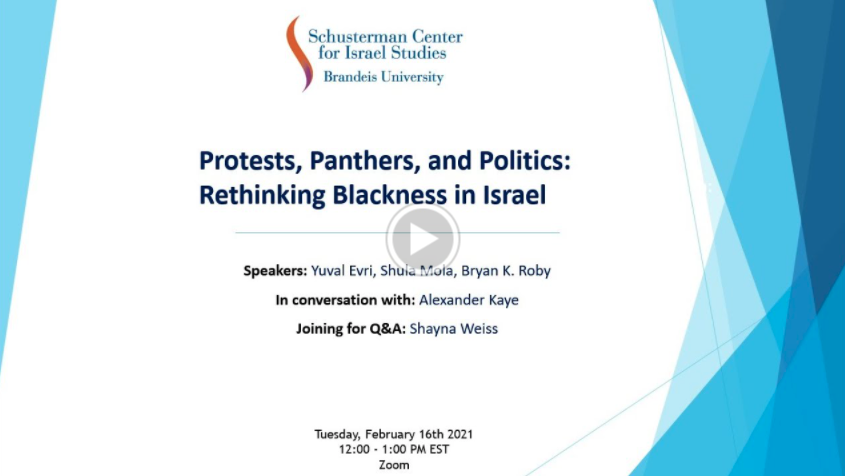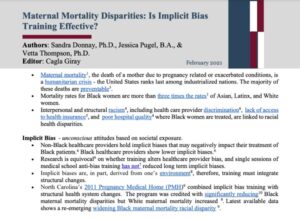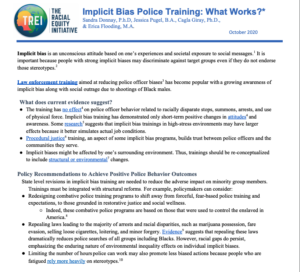Anti-Black Racism among Jewish Israelis [and Recent Asylum-Seekers]1
Soren Barnett and Sandra Donnay
August 2021
 Ethiopian Israelis are incarcerated at a rate that is 760% higher than their proportion in Israeli society.2
Ethiopian Israelis are incarcerated at a rate that is 760% higher than their proportion in Israeli society.2- Forty percent of soldiers of Ethiopian origin have been imprisoned.2
- Mizrahi Israelis receive 20% less income than their Ashkenazi counterparts.3
- Mizrahi Israelis have on average 18% lower education attainment compared to Ashkenazi Israelis.3
Israel, officially formed in 1948 under the United Nations Resolution 181,4 has a population of almost 9.3 million people that is composed of Jews (73.9%), Arabs (21.1%), and other ethnic/religious groups.5 Early Jewish inhabitants of the modern state came primarily from Eastern Europe, many of whom were escaping racial/ethnic othering.6,7 In the years following, Israel has experienced waves of Jewish immigration from the Middle East, Ethiopia, the Former Soviet Union, and more recently, non-Jewish asylum seekers from Eritrea and Sudan.
From the 1950’s through the 1970’s, anti-Black discrimination and Black identity were directed toward and metaphorically claimed by Mizrahi Jews from Middle Eastern countries, many of whom were of Moroccan and Yemenite descent.6,7 Over the past few decades, anti-Black racism in Israel has been primarily directed towards Ethiopian Israelis, part of the Jewish Beta Israel community, who number about 155,300 people in Israel (1.7% of Israel’s population),8 and non-Jewish asylum seekers from Eritrea and Sudan who constitute less than 1% of the population.9 Experiences of anti-Black racism are well documented, in both research journals and the media, and consist of police violence and racial profiling of males,10 overrepresentation in military and civilian prison,2 discrimination in employment and housing,12 and everyday interpersonal discrimination.13
With each new wave of Jewish immigration to Israel, Israeli concepts of race within a national state, which were largely derived from French, British, and German colonial efforts, have expressed themselves as an ever-shifting, anti-Black racial hierarchy.7 This is demonstrated by the continual processes of “whitening” and “blackening” of different geographic origin-defined groups within Israel over time.6,7 For example, among Jewish Israelis, Ethiopian Jews (who arrived beginning in the 1980’s) are seen and treated as more Black or “less than” compared to Mizrahi Jews (who arrived primarily in the 1950’s-1960’s), who are in turn seen and treated as more Black/less than Ashkenazi Jews, both in symbol and in phenotype.6,7 Thus, Israel’s uniquely fluid racial boundaries over time are emblematic of the arbitrary and contextual nature of racial hierarchies.6,7
1While constructions of “Blackness” in the context of Israel, and consequential racial discrimination, do contain important connections to Arab/Palestinian-Israeli’s (21.1% of Israeli citizens) experiences, Palestinian identity, and the larger Israeli-Palestinian conflict, this is a sub-topic that will be explored further in an additional article. You may also consult reference 6, page 3, and reference 7 [43:00] for more on this issue.
2Franzman, S. J. (2014, February 17). Locking Israel’s Ethiopian Problem Away Behind Bars. Academia.edu. https://www.academia.edu/6122409/Why_are_40_of_male_Ethiopian_soldiers_in_the_Israeli_army_sentenced_to_prison
3MEE Staff. (2021 June 11). Education and income gaps widening between Israel’s different Jewish groups, says report. Middle East Eye. https://www.middleeasteye.net/news/israel-education-ashkenazi-mizrahi-report
4 United Nations Resolution 181. (2011, July 29). Encyclopedia Britannica. Retrieved on January 24, 2021 from https://www.britannica.com/topic/United-Nations-Resolution-181.
5Central Bureau of Statistics. (2020, December 31). Population of Israel on the Eve of 2021. https://www.cbs.gov.il/en/mediarelease/Pages/2020/Population-of-Israel-on-the-Eve-of-2021.aspx
6 Dorchin, Uri. (2020, Summer). “The History, Politics and Social Construction of ‘Blackness’ in Israel.” Currents: Briefs on Contemporary Israel 1(2), 1-8.
7 Evri, Y., Mola, S., & Koby, B. K. (2021, February 16). Protests, Panthers, and Politics: Rethinking Blackness in Israel [Zoom webinar]. Brandeis University, Waltham, Massachusetts, U.S. A. https://www.youtube.com/watch?v=qafU9gDbvHw
8 Lidman, M. (2018, February 2). 10 key questions about Israel’s African asylum seeker controversy. The Times of Israel. https://www.timesofisrael.com/in-israels-new-plan-to-deport-africans-details-abound/
9Deane, Y. J. (2019, June 20). World Refugee Day: Israel’s contested refugee population. The Jerusalem Post. https://www.jpost.com/Israel-News/World-Refugee-Day-Israels-contested-refugee-population-593116
10 Sokol, S. (2020, June 18). Israeli anti-racism czar says police profile Ethiopians, still have a ways to go. The Times of Israel. https://www.timesofisrael.com/head-of-national-anti-racism-unit-accuses-police-of-profiling-ethiopian-israelis/
11 Halbfinger, D. M and Kershner, I. (2019, July 13). After a Police Shooting, Ethiopian Israelis Seek a ‘Black Lives Matter’ Reckoning. The New York Times. https://www.nytimes.com/2019/07/13/world/middleeast/ethiopian-israeli-protests-racism.html
12 Pileggi, T. (2017, January 21). Thousands of Arab Israelis protest home demolitions, discrimination. The Times of Israel. https://www.timesofisrael.com/thousands-of-arab-israelis-protest-home-demolitions-discrimination/.
13McClenaghen, M. (2014, January 6). Israeli protests: a refugee’s story. As tens of thousands of migrants demonstrate in Tel Aviv, one man describes what happened when he went home to Sudan. Guardian. https://www.theguardian.com/world/2014/jan/06/israel-refugees-protest-sudan.
Brandeis University Webinar:
Protests, Panthers, and Politics:
Rethinking Blackness in Israel
Click here to view.




